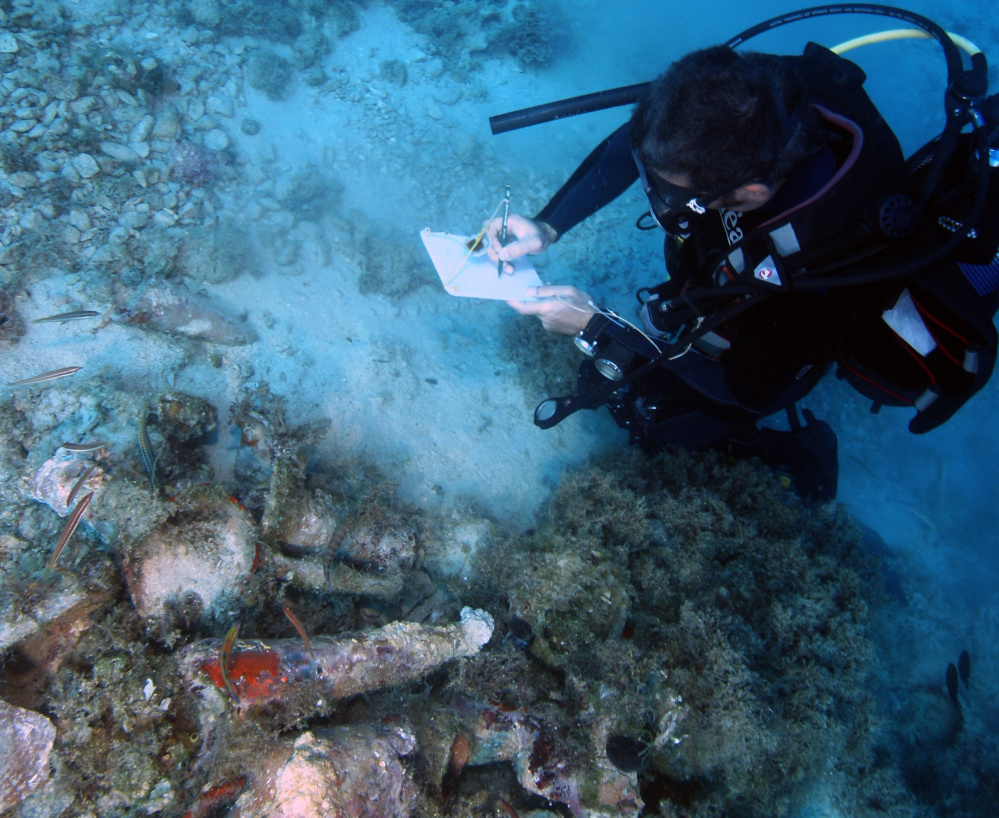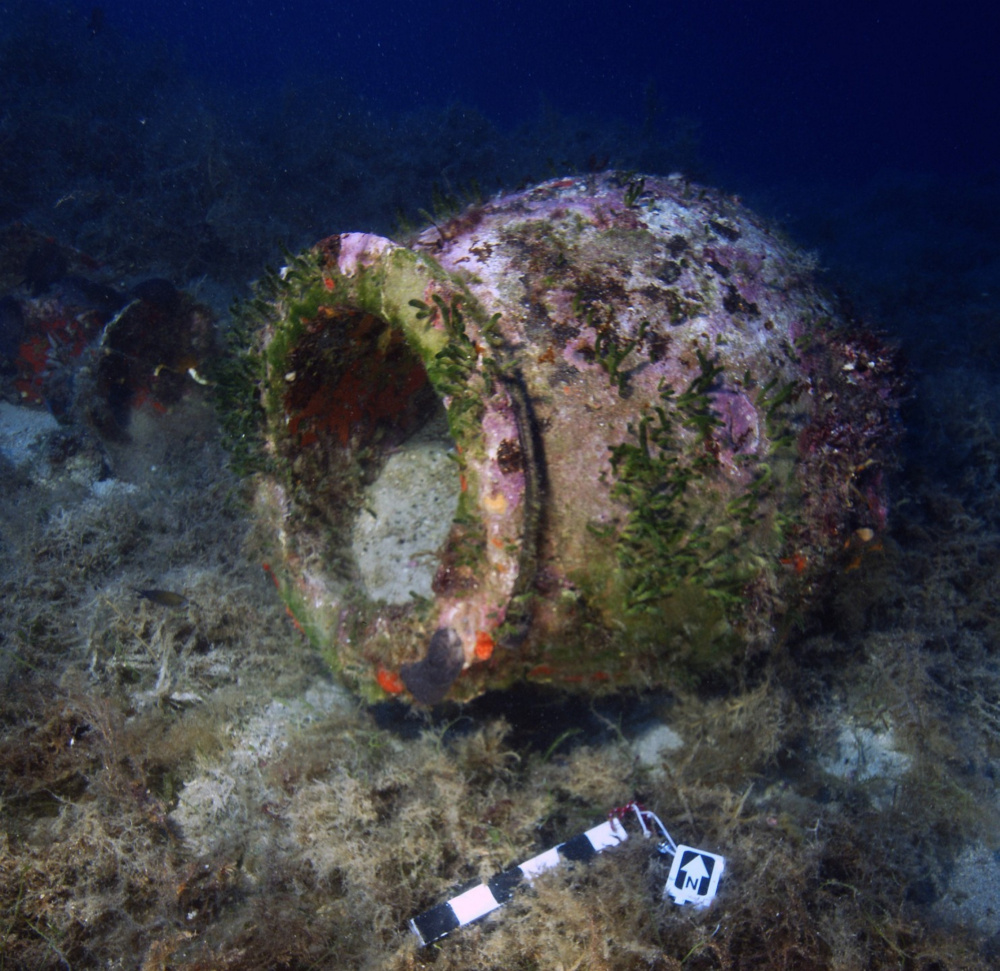In the Fourni archipelago of the Greek Aegean region, towering underwater cliffs descend into the darkness of the deep sea. Marine archaeologists comb these murky depths for objects made by human hands – a ceramic shard encrusted with sea sponges, or an ancient vase that an eel has claimed for its home.
Through the centuries here, human handiwork has been absorbed by its natural aquatic surroundings, with rock and reef steadily growing around any remnants of life from early Western civilization.
The seeming improbability, then, of finding substantive artifacts in the patchwork makes discovery all the more exciting.
“You’re constantly scanning in any direction,” Peter Campbell, an underwater archaeologist at the University of Southampton, said. “There’s this moment that you see something, a straight line that doesn’t look natural, and your eye kind of flips over. You realize it’s an ancient pot or ancient anchor, then you notice this stuff is everywhere.”
While undertaking a survey of possible wreckage around Fourni last month, Campbell and his team experienced this sense of wonder an unprecedented 22 times over.
When Campbell and the expedition’s co-director, Greek archaeologist George Koutsouflakis, arrived at the collection of the 13 islands and islets in mid-September, they had heard some rumblings of artifacts from ancient ships to be found in the area.
As luck would have it, they came across a shipwreck on their very first dive, which the team took to be “a good omen.” Over the course of less than two weeks – the duration of their survey permit – they would have been content to find three or four wrecks in total.
After the first five days, that number hit ten. Then, on a single day, they found an additional six.
At this point, overwhelmed with the unexpected fortune, they decided to stop looking for wrecks so they could focus on adequately recording information from the ones they had already encountered. But even this decision didn’t stop them from finding a few more by the expedition’s end, making the sum uncovered in just 13 days an astounding 22 shipwrecks.
During this short period, Campbell and Koutsouflakis’s crew of marine archaeologists, local fishermen, sponge divers and the occasional robot (read: remotely-operated vehicle) increased the total number of known ancient shipwrecks in Greece by 12 percent.
An announcement this week revealed that the survey, a collaborative effort between the Greek Ephorate of Underwater Antiquities and the Florida-based RPM Nautical Foundation, yielded shipwrecks dating from the Archaic Period (700-480 B.C.) through the Late Medieval Period (16th century), including some wrecks that are more than 2,500 years old.
The small and relatively obscure region may be “the ancient shipwreck capital of the world,” the release says.
These shipwrecks, however, illustrate just how crucial a passageway the small archipelago was for seafaring merchants of the ancient times. The storms that ravaged the neighboring islands of Samos and Icaria were so fierce that sailors often took refuge in Fourni’s abundance of gentle bays. The archipelago lies along a major east-west crossing route, as well as the primary north-south path from the Aegean to the Levant.
The large number of shipwrecks found suggests not that Fourni was an uncommonly dangerous locale, but rather that it welcomed an immense volume of sea traffic over a long period of time. Campbell estimates that there was likely no more than one wreck every hundred years.
Campbell said all the wrecks they found were from typical merchant sailing vessels and not from any warships.
Send questions/comments to the editors.




Success. Please wait for the page to reload. If the page does not reload within 5 seconds, please refresh the page.
Enter your email and password to access comments.
Hi, to comment on stories you must . This profile is in addition to your subscription and website login.
Already have a commenting profile? .
Invalid username/password.
Please check your email to confirm and complete your registration.
Only subscribers are eligible to post comments. Please subscribe or login first for digital access. Here’s why.
Use the form below to reset your password. When you've submitted your account email, we will send an email with a reset code.